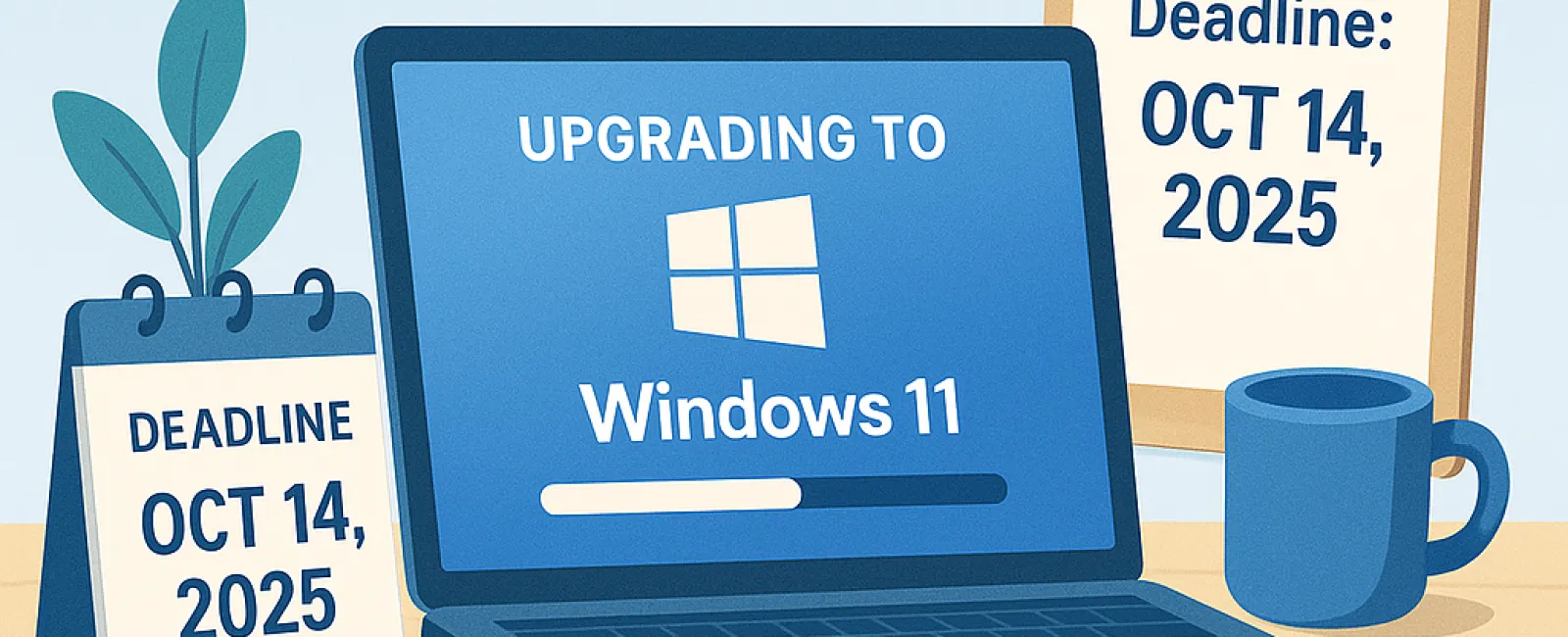June 23, 2025
If you're still using Windows 10 on your business machines, it's time to face the facts: the deadline is approaching.
On October 14, 2025, Microsoft will officially end support for Windows 10. This means no more security updates, bug fixes, or technical assistance.
What business owners need to realize is that the cost of waiting goes beyond just eventually needing to upgrade.
It's about the risks and expenses that come with delaying the upgrade.
"We'll Deal With It Later" Is An Expensive Strategy
Upgrading every machine in your business might not be your favorite budget item, so postponing it feels easier—until something goes wrong.
Here's what procrastination actually costs you:
1. You're Operating Without A Safety Net
After Microsoft stops updating Windows 10, any new security vulnerabilities become your problem. Hackers target outdated systems because they're easier to exploit. It's like locking your front door but leaving the windows open. A single breach could cost thousands or even jeopardize your entire business.
2. Software And Hardware Compatibility Issues
Many business applications like accounting software, CRMs, and industry-specific platforms are already dropping support for Windows 10. If your systems fail during critical tasks or client presentations, the cost can be significant. It's not just software; new printers, peripherals, and security tools might also stop working properly with your outdated operating system.
3. Lost Productivity
Older systems run slower, crash more often, and frustrate your team. Even small delays add up, reducing efficiency, morale, and competitiveness. If every employee loses 10 to 15 minutes daily to tech problems, the cumulative cost over a month is substantial.
4. Emergency Upgrades Are Always More Expensive
Waiting until systems fail or employees are locked out leads to panic spending on emergency hardware, rush IT services, and business downtime while replacements are made. Planning ahead saves both money and stress.
5. You're Risking Compliance Violations
If your business handles sensitive information or must comply with regulations like HIPAA or PCI-DSS, using unsupported systems could lead to fines or legal action. Most regulatory standards require up-to-date security measures, which Windows 10 won't meet after October 2025.
What Smart Business Owners Are Doing Now
They're preparing before the deadline by upgrading devices and using this opportunity to:
- Audit which devices need replacement
- Streamline tools and software
- Strengthen cybersecurity
- Plan IT budgets more effectively for 2025
How To Make The Transition Smooth
We recommend:
- Running a compatibility check to identify machines that can't support Windows 11
- Auditing your applications to ensure they work on Windows 11 or newer
- Budgeting for new hardware early to avoid supply chain issues
- Partnering with an IT provider to manage the transition smoothly, minimizing downtime and surprises
Don't Wait Until October To Panic
Delaying the upgrade will cost more in money, stress, and lost opportunities. We're helping small businesses upgrade smartly with careful planning, smooth execution, and a focus on future growth.
Click
here or give us a call at 610-628-2461 to book your FREE IT Clarity Call and we'll help you identify what
needs upgrading, what can stay and how to build a transition plan that won't
disrupt your business before the deadline.



